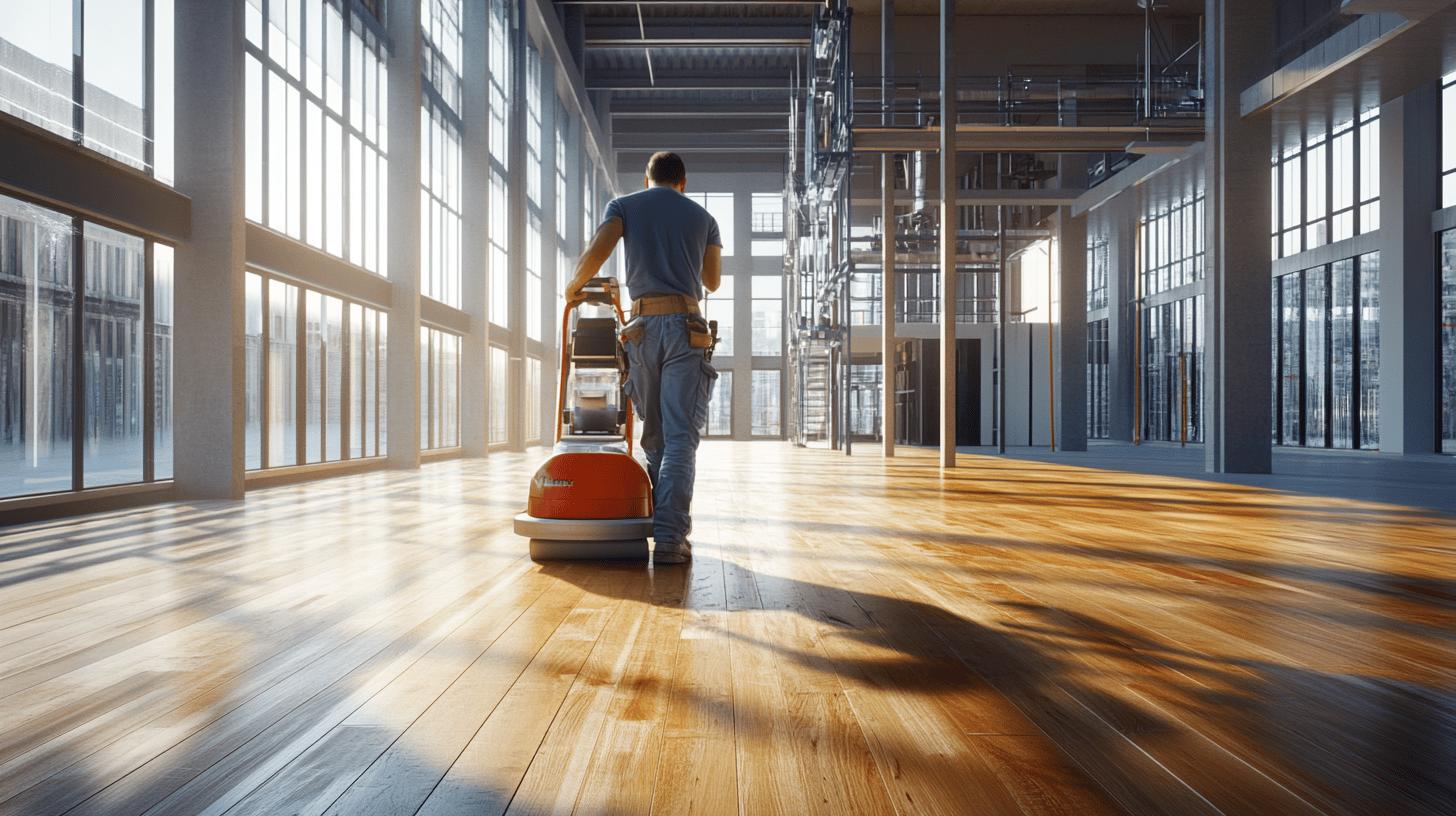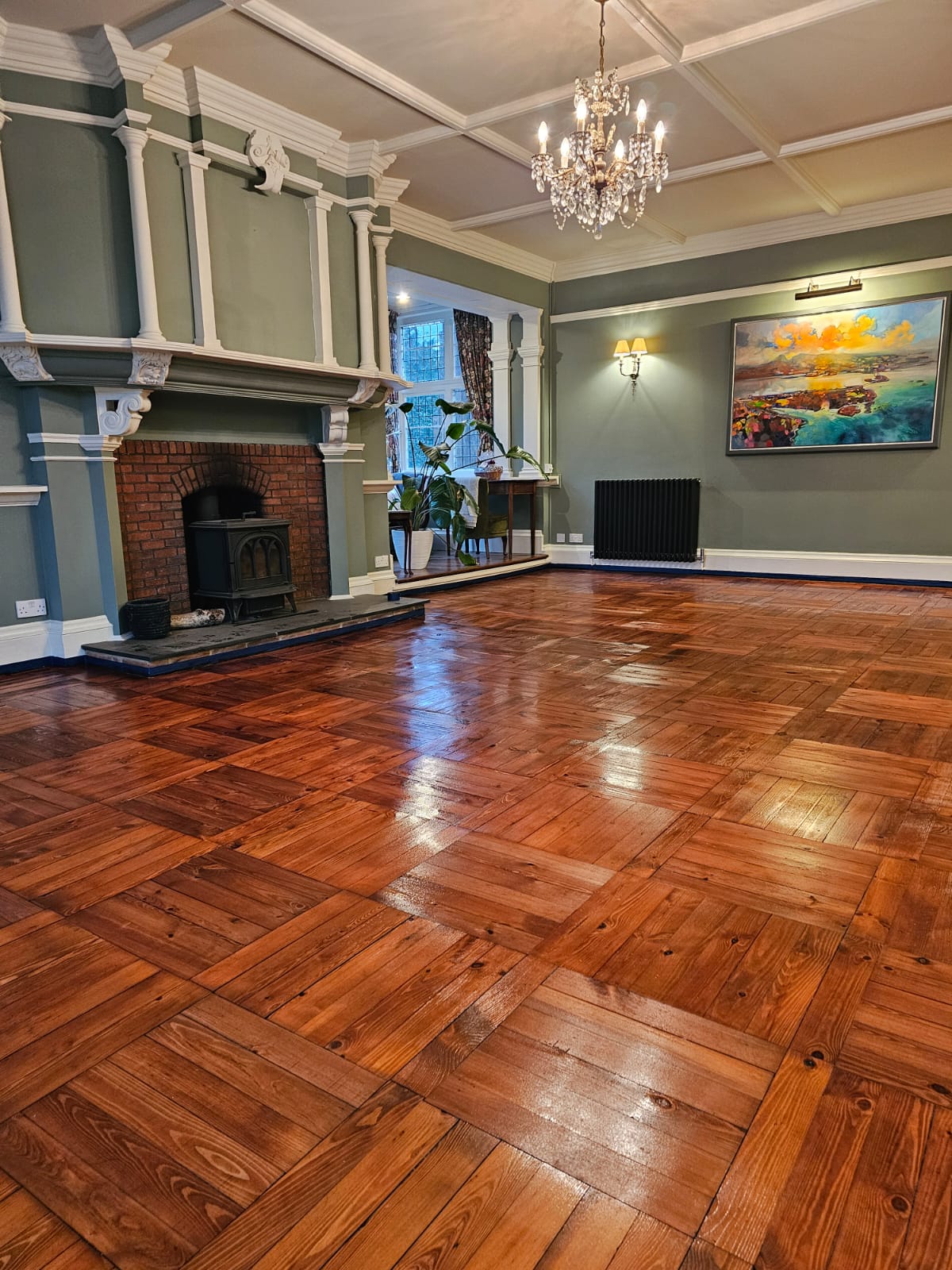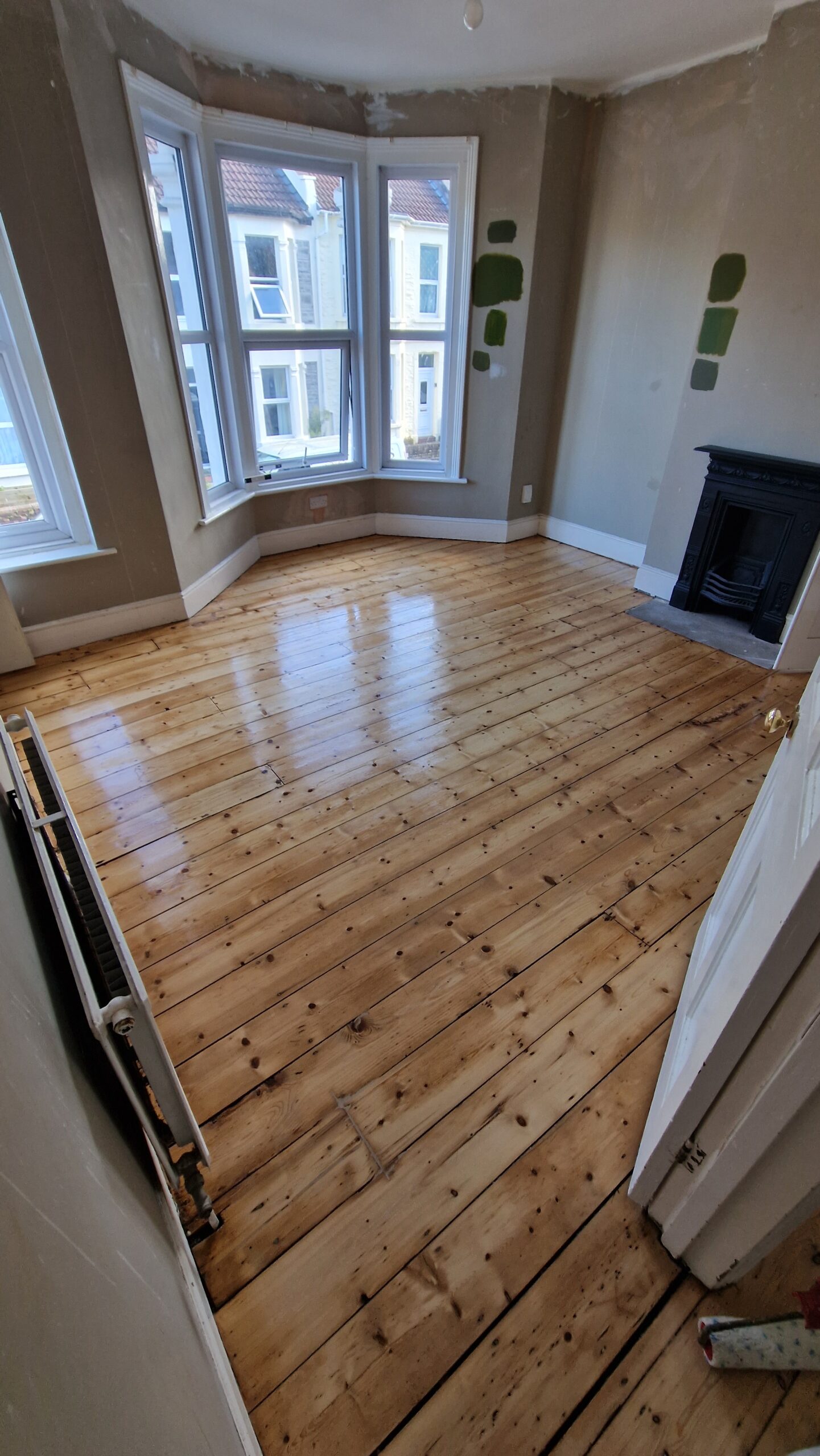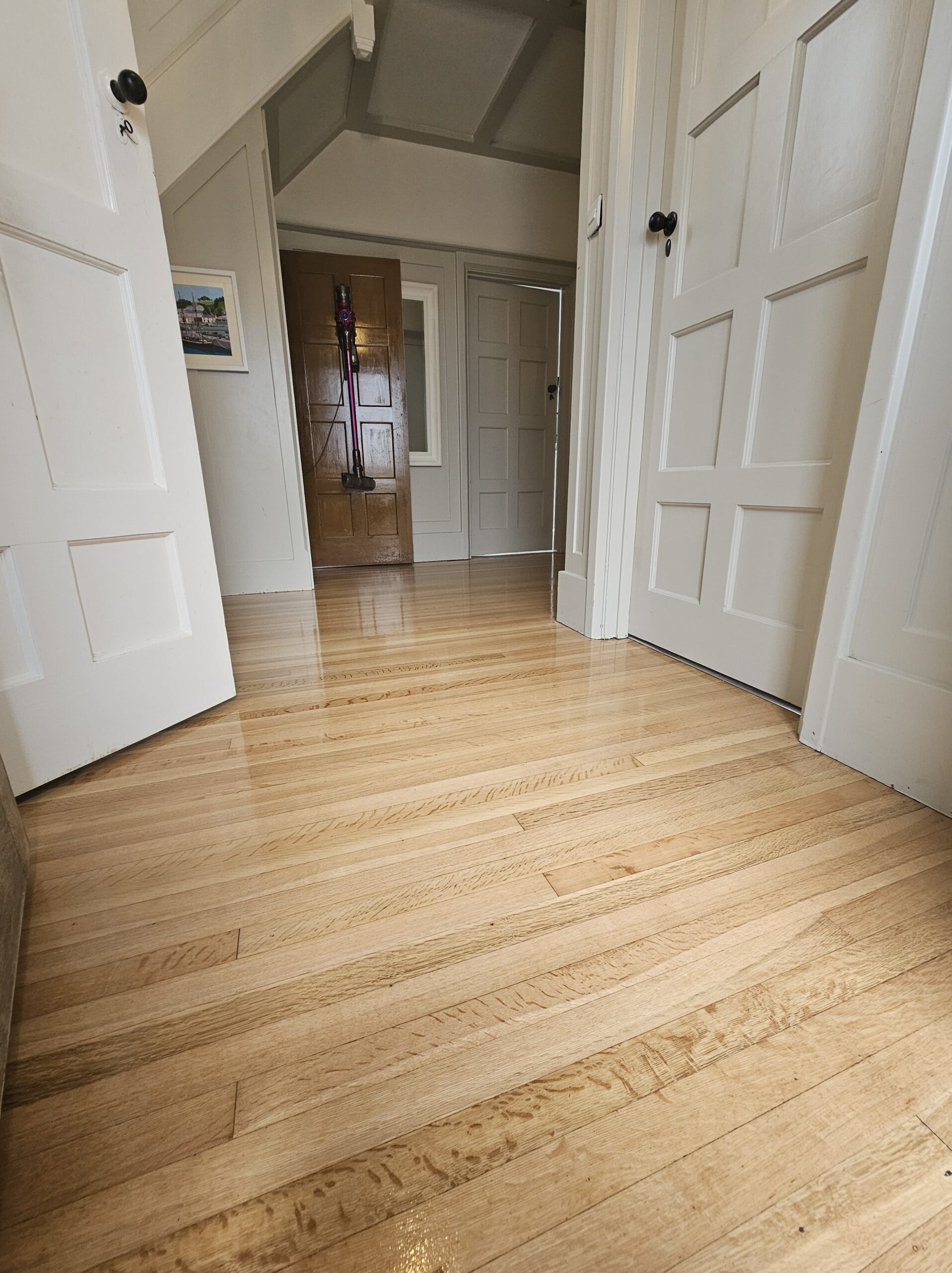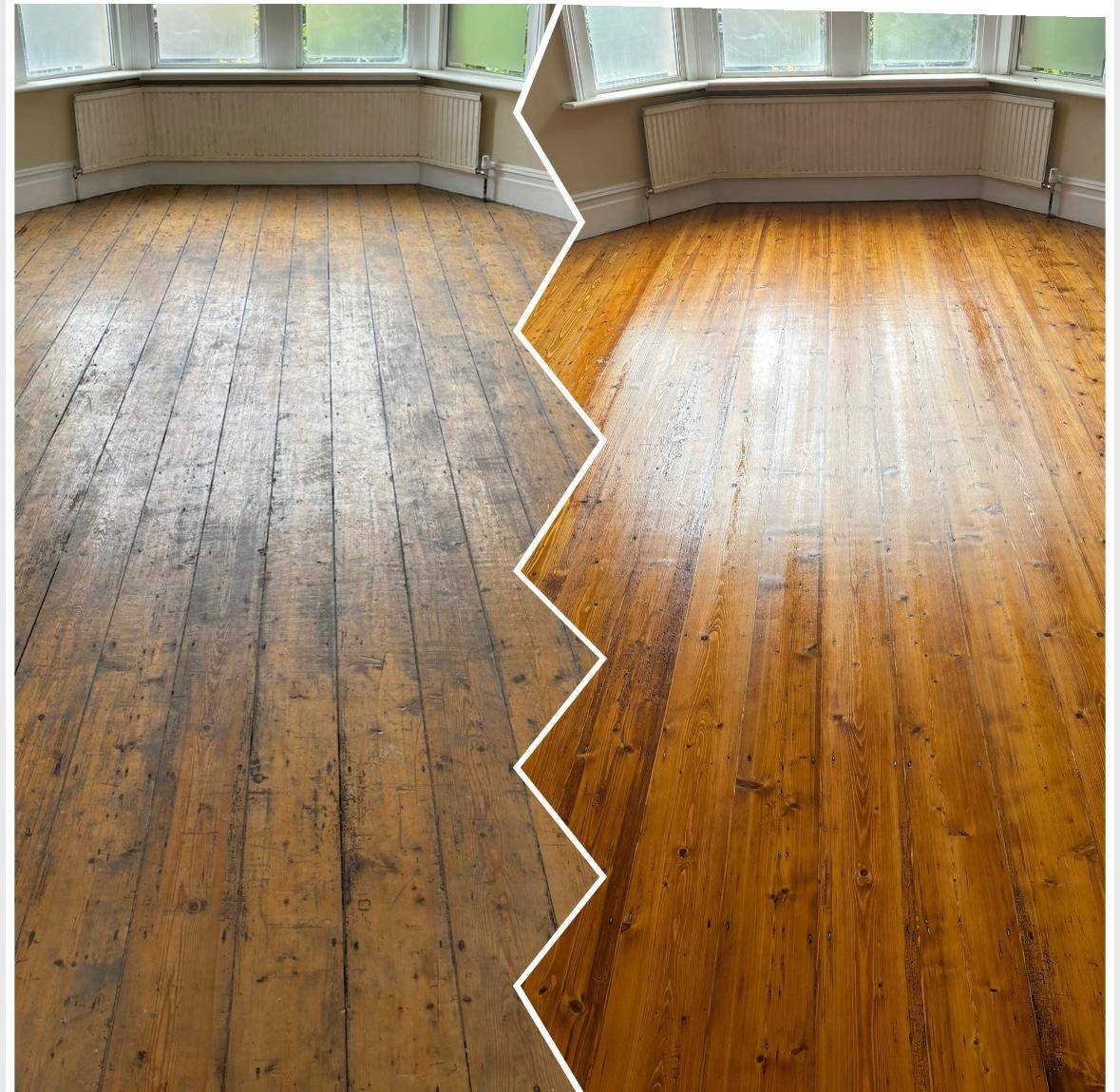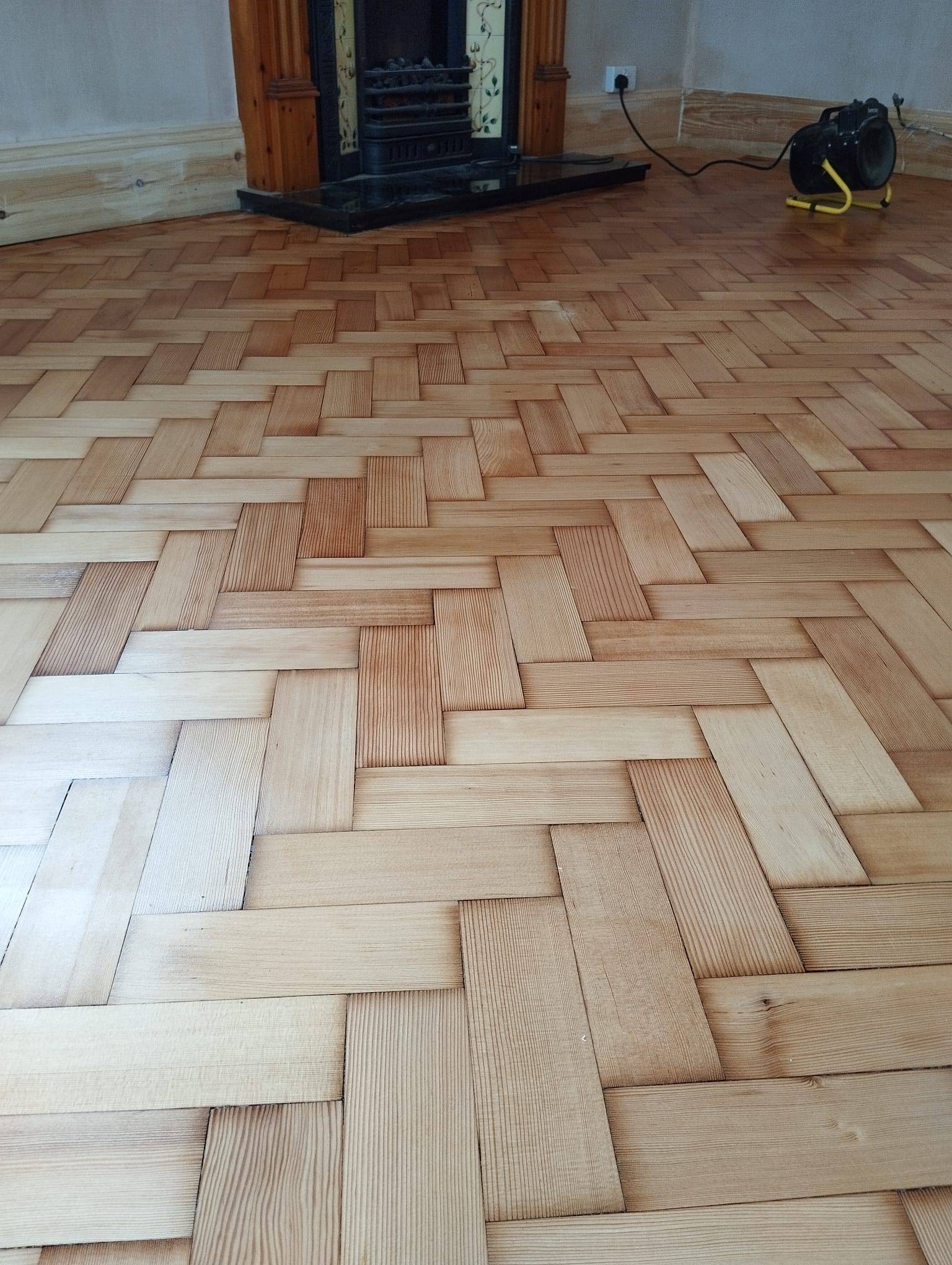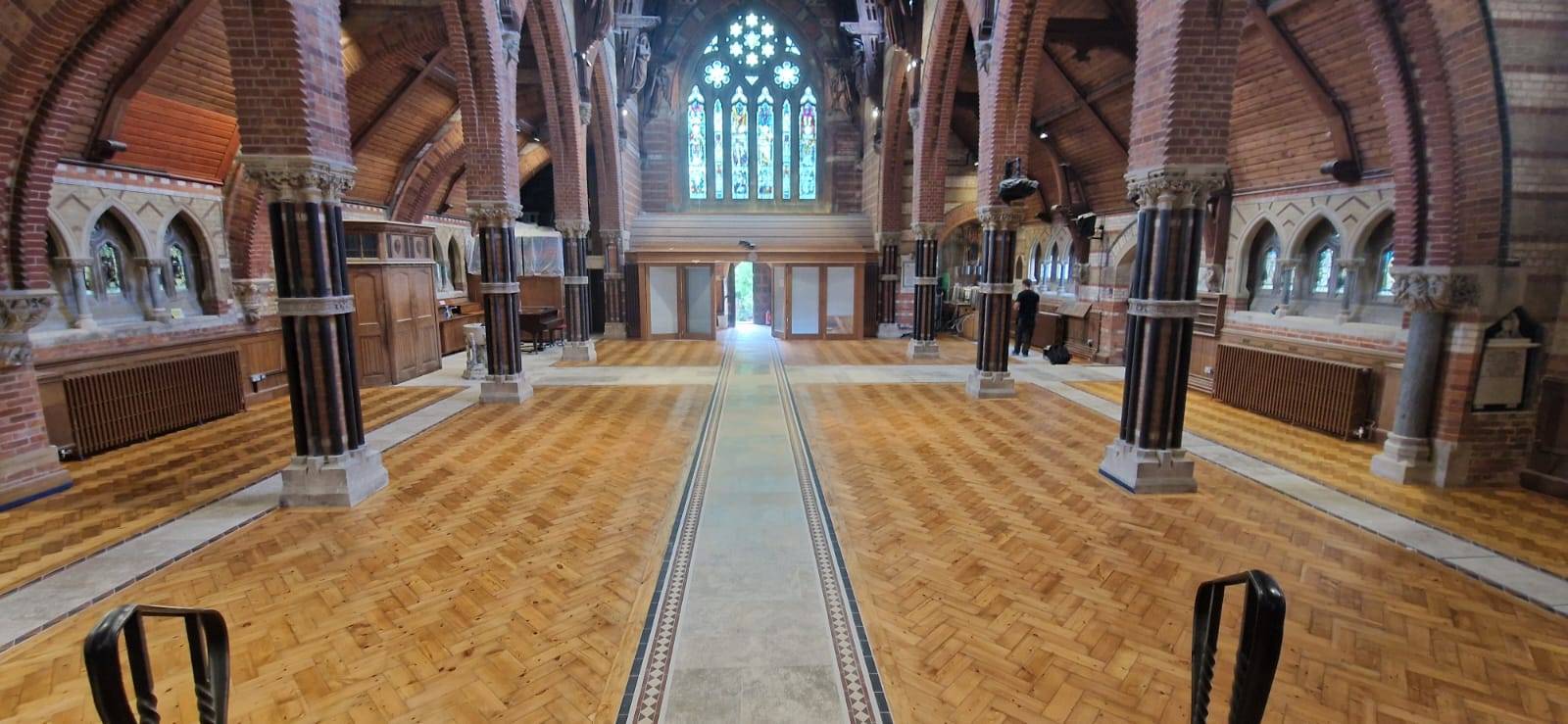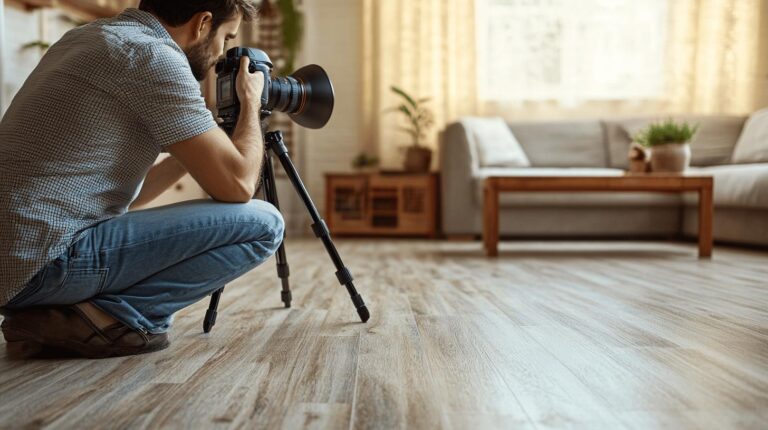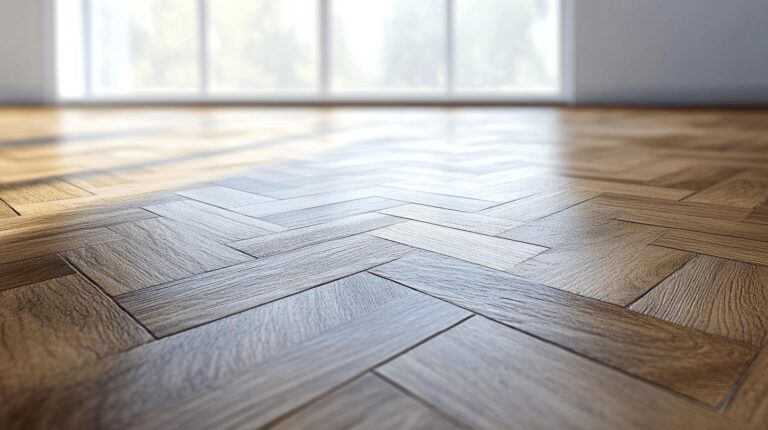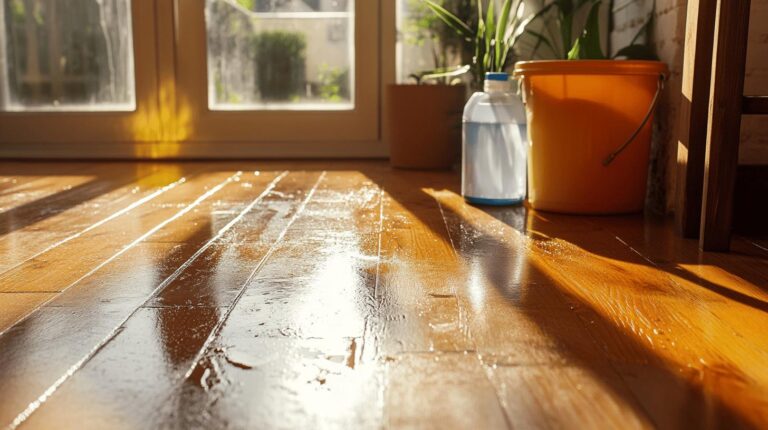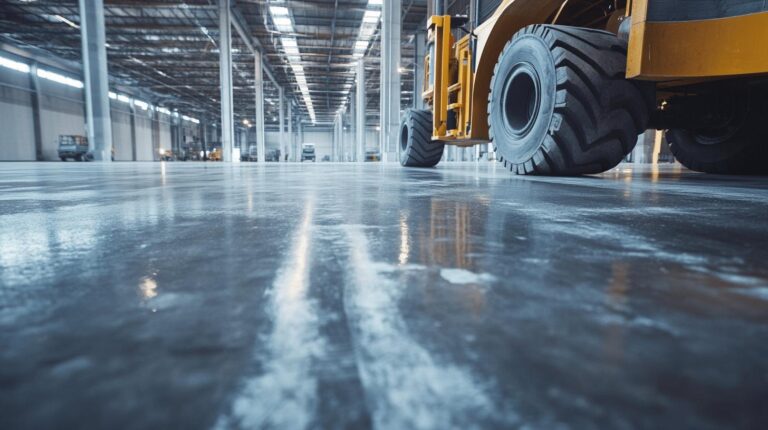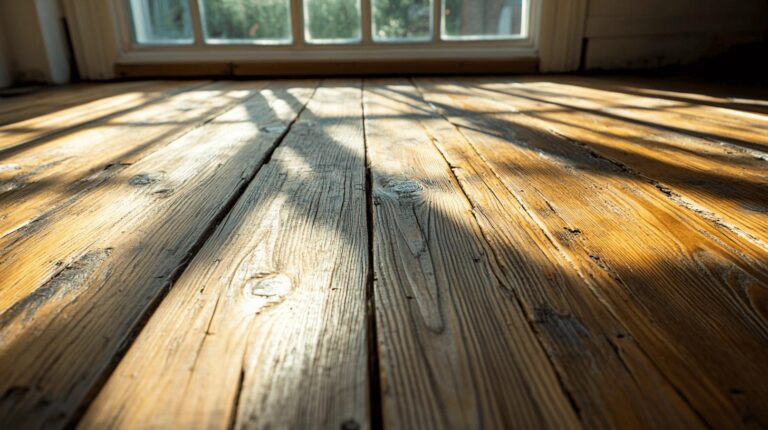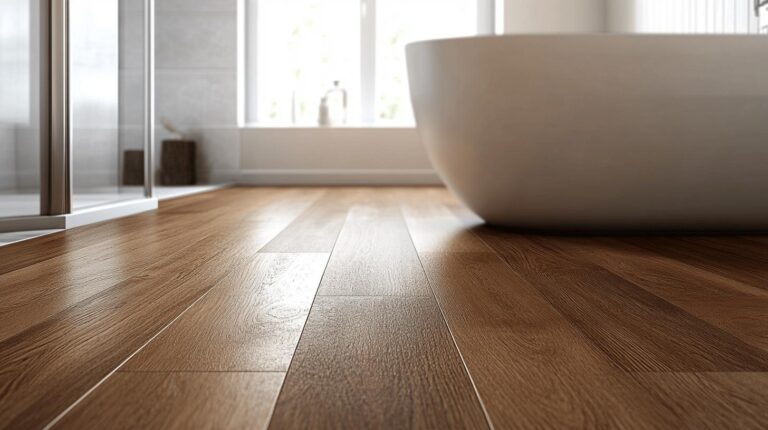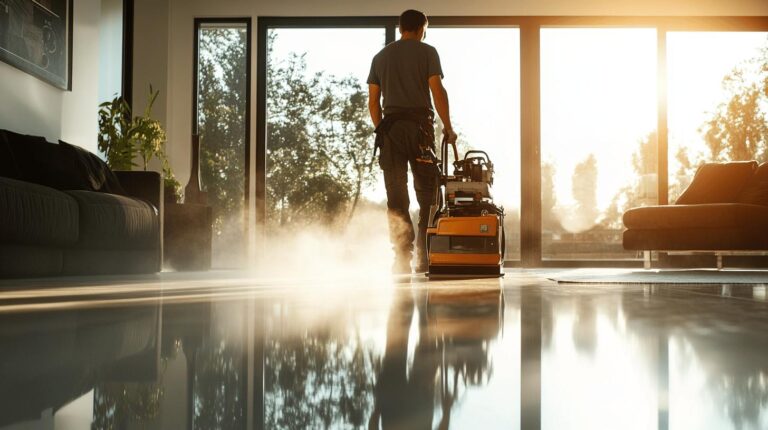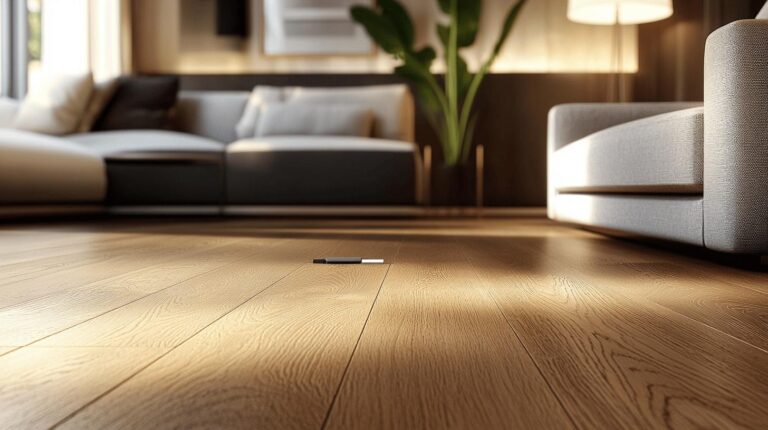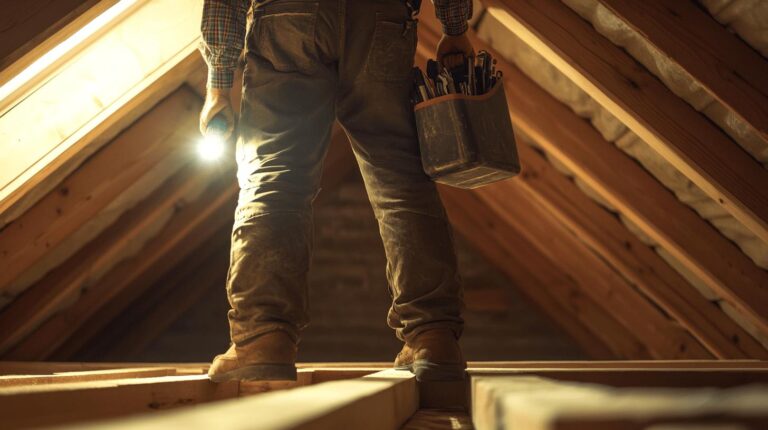Is your commercial space feeling tired and worn out? A well-executed commercial floor restoration could be the transformative solution you need. Beyond mere aesthetics, properly refinished wood floors can dramatically elevate your space’s professional appeal and longevity. This article delves into the essential steps and expert tips for assessing, preparing, and refinishing your commercial wood floors, ensuring that the process is smooth and effective. Whether you already have a wood floor in need of restoration or contemplate installing one, these insights will guide you towards achieving a superior, revitalised floor that stands the test of time.
Assessing Your Commercial Wood Floor’s Condition
Before embarking on the refinishing process, it is crucial to evaluate the condition of your wood floors. This initial assessment helps determine the necessity and feasibility of refinishing, ensuring the best possible outcome for your commercial space transformation.
Signs of Wear, Damage, and Dullness
Look for visible signs of wear, damage, or dullness. Common indicators include:
- Surface scratches and scuffs: These can be caused by high foot traffic or moving heavy equipment.
- Discolouration: Fading or darkened areas suggest sun damage or moisture exposure.
- Bare spots: Areas where the finish has worn away, exposing the wood beneath.
Identifying Genuine Hardwood Floors
Determining if your floor is genuine hardwood is essential, as each material requires a distinct refinishing technique. To check if your floor is genuine hardwood:
- Remove a floor grate, vent, or doorway threshold: This allows you to inspect the cross-section of the floorboards.
- Check the thickness: Solid hardwood floors typically have a thickness of ¾ inch or more, while engineered wood floors are thinner with a veneer layer on top.
Refinishing Potential of Solid Hardwood Floors
Solid hardwood floors can usually be refinished four to five times throughout their lifespan. If unsure of your floor’s history:
- Measure the remaining thickness: Floors need at least 1/8 inch of wood above the tongue and groove to be safely sanded.
By thoroughly assessing your commercial wood floor’s condition, you can make informed decisions and ensure a successful refinishing process, ultimately enhancing the aesthetic and functional value of your space.
Essential Preparation Techniques for Wood Floor Refinishing
Proper preparation is key to a successful wood floor refinishing project in a commercial space. Each step ensures the process is smooth and the final result is flawless.
Importance of Thorough Cleaning and Damage Repair
Why is it essential to clean the floor thoroughly before refinishing? Thorough cleaning removes dirt, dust, and debris that could interfere with the refinishing process. It also helps to identify any damages that need repair. Damages such as deep scratches, dents, or loose boards can affect the quality of the refinishing job and should be addressed beforehand.
Safely Removing Shoe Molding
How do you remove shoe molding without causing damage? Use a molding bar or putty knife to gently pry the molding away from the wall. Insert the tool between the wall and the molding, applying steady pressure to lift it off without breaking or damaging it. This step is crucial as it prevents unnecessary damage to both the molding and the floor.
Clearing the Space for Ample Working Room
Why is it necessary to clear the space entirely? Clearing the space of furniture and items not only protects belongings but also provides ample room to work. This reduces the risk of accidents and ensures that the entire floor area is accessible for refinishing.
Essential Preparation Tasks
To prepare your commercial space for wood floor refinishing, follow these essential tasks:
- Clear the space of furniture and items: Remove all furniture, rugs, and other items to create an open workspace.
- Clean the floor thoroughly: Sweep, vacuum, and mop the floor to remove all dirt and debris.
- Remove shoe molding: Use a molding bar or putty knife to carefully remove the molding around the edges of the room.
- Repair any visible damages: Fix any deep scratches, dents, or loose boards to ensure a smooth and even finish.
- Ensure proper ventilation: Open windows and doors to provide adequate airflow, which is essential for drying and curing the finish.
Following these preparation techniques will set the stage for a successful wood floor refinishing project, resulting in a beautifully restored commercial space.
Step-by-Step Guide to Refinishing Commercial Wood Floors
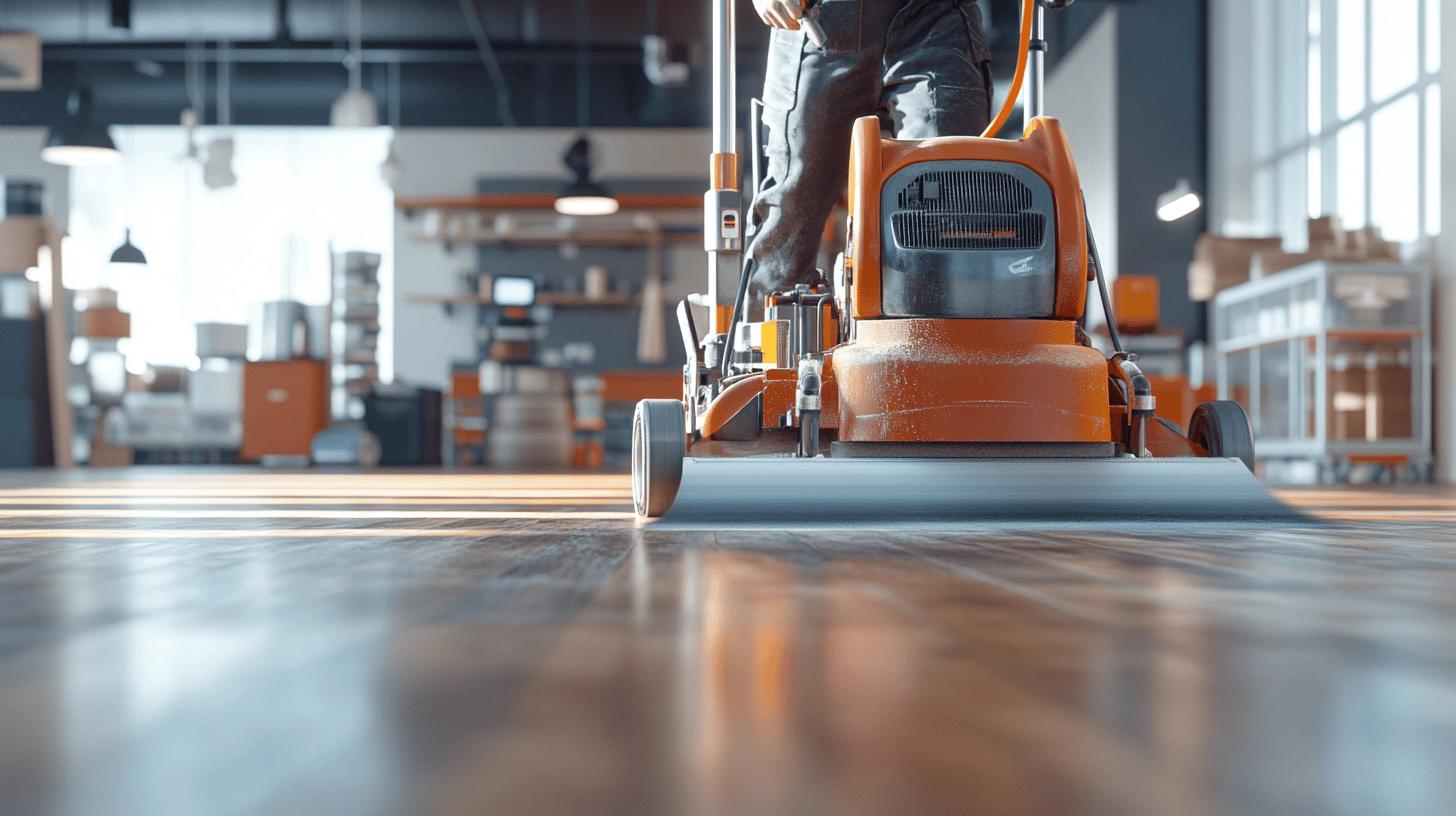
Refinishing wood floors in a commercial space involves a systematic process to ensure a durable and visually appealing finish. This step-by-step guide covers sanding, staining, and sealing.
Sanding
What tools are required for sanding? You will need a large walk-behind sander for the main area, a hand-held random orbital sander for edges, and a detail sander for corners.
What are the different grit levels and their purposes? Sanding involves multiple passes with different grit levels to achieve a smooth surface:
- First Pass (30-40 grit): Heavy sanding to remove the old finish and level the floor.
- Second Pass (50-60 grit): Smoothing out the floor after the initial pass.
- Final Pass (80+ grit): Fine sanding to prepare the floor for staining or sealing.
Grit Level Purpose 30-40 First pass, heavy sanding 50-60 Second pass, smoothing out 80+ Final pass, fine sanding
Staining
Should you stain the floor or apply polyurethane directly? This depends on the desired finish. Staining can enhance the wood’s natural colour or change its appearance. If you prefer a natural look, you can skip staining and apply polyurethane directly.
What considerations should be made when choosing a stain? Consider the commercial space’s design and usage. Darker stains can hide imperfections but may show dust and scratches more easily. Lighter stains provide a fresh look but may require more maintenance.
Sealing
What are the options for sealing the floor? You can choose between oil-based and water-based polyurethane.
- Oil-based polyurethane: Enhances wood colour and provides a durable finish but has a longer drying time.
- Water-based polyurethane: Offers a clear finish, dries faster, and is less odorous but may not enhance the wood’s colour as much.
How to apply the sealant evenly? Use a high-quality brush or roller, applying thin, even coats. Allow each coat to dry thoroughly before applying the next. Typically, two to three coats are recommended for optimal protection.
By following this step-by-step guide, you can achieve a professional and long-lasting finish for your commercial wood floors, ensuring they remain a stunning feature in your space.
Choosing the Right Finish for Commercial Wood Floors
Selecting the right finish for commercial wood floors is crucial for both aesthetic appeal and durability. The finish you choose will determine the floor’s resistance to wear and tear, its maintenance requirements, and its overall appearance.
Types of Finishes
Oiling
Oiling is an excellent choice for water repellence. It penetrates the wood, enhancing its natural texture and providing a warm, rich tone. While it offers good protection against moisture, it requires regular maintenance to retain its finish.
Waxing
Waxing gives the floor a soft, natural appearance. It creates a protective layer on the surface, adding a subtle sheen. Wax finishes are relatively easy to apply and can be buffed to maintain their look. However, they are less durable than other finishes and may need frequent reapplication.
Buffing
Buffing is used to achieve a polished, glossy sheen. It involves applying a fine layer of protective material and then polishing the floor to a high gloss. Buffing enhances the wood’s natural beauty but may not offer as much protection against scratches and dents.
Oil-based Polyurethane
Oil-based polyurethane enhances the wood’s colour, providing a warm, amber hue. It is durable and long-lasting but has a longer drying time and stronger odour. This finish is ideal for high-traffic commercial areas where durability is a priority.
Water-based Polyurethane
Water-based polyurethane offers a clear finish that doesn’t alter the wood’s natural colour. It dries faster and has a lower odour than oil-based options, making it more convenient for commercial spaces. However, it may not be as durable as oil-based polyurethane.
Comparison of Finishes
- Oil-based: Enhances wood colour and longer drying time.
- Water-based: Clear finish, faster drying.
- Waxing: Soft, natural appearance.
Choosing the right finish involves balancing aesthetics, durability, and maintenance needs. Consider the specific requirements of your commercial space to select the most suitable option.
Cost Considerations for Refinishing Commercial Wood Floors
When planning to refinish wood floors in a commercial space, it’s essential to understand the cost considerations involved. The primary factors influencing the cost include the size of the area and the choice of materials.
What factors influence the cost of refinishing? The size of the area is a significant factor; larger spaces require more materials and labour. Additionally, the type of finish and quality of materials used can vary in price, impacting the overall cost.
Why is budgeting for materials, equipment, and labour important? Proper budgeting ensures that you allocate sufficient funds for each aspect of the project. This includes the cost of sandpaper, stains, sealants, and the necessary equipment. Labour costs should also be factored in, especially if hiring professionals.
What steps can help estimate the costs accurately? Requesting a fixed price quote from a reputable contractor provides a clear understanding of potential expenses. Additionally, using a price calculator tailored to wood floor refinishing projects can offer a detailed cost breakdown.
Careful consideration of these factors will help you manage your budget effectively and ensure a successful commercial flooring upgrade.
Maintenance Tips for Refinished Commercial Wood Floors
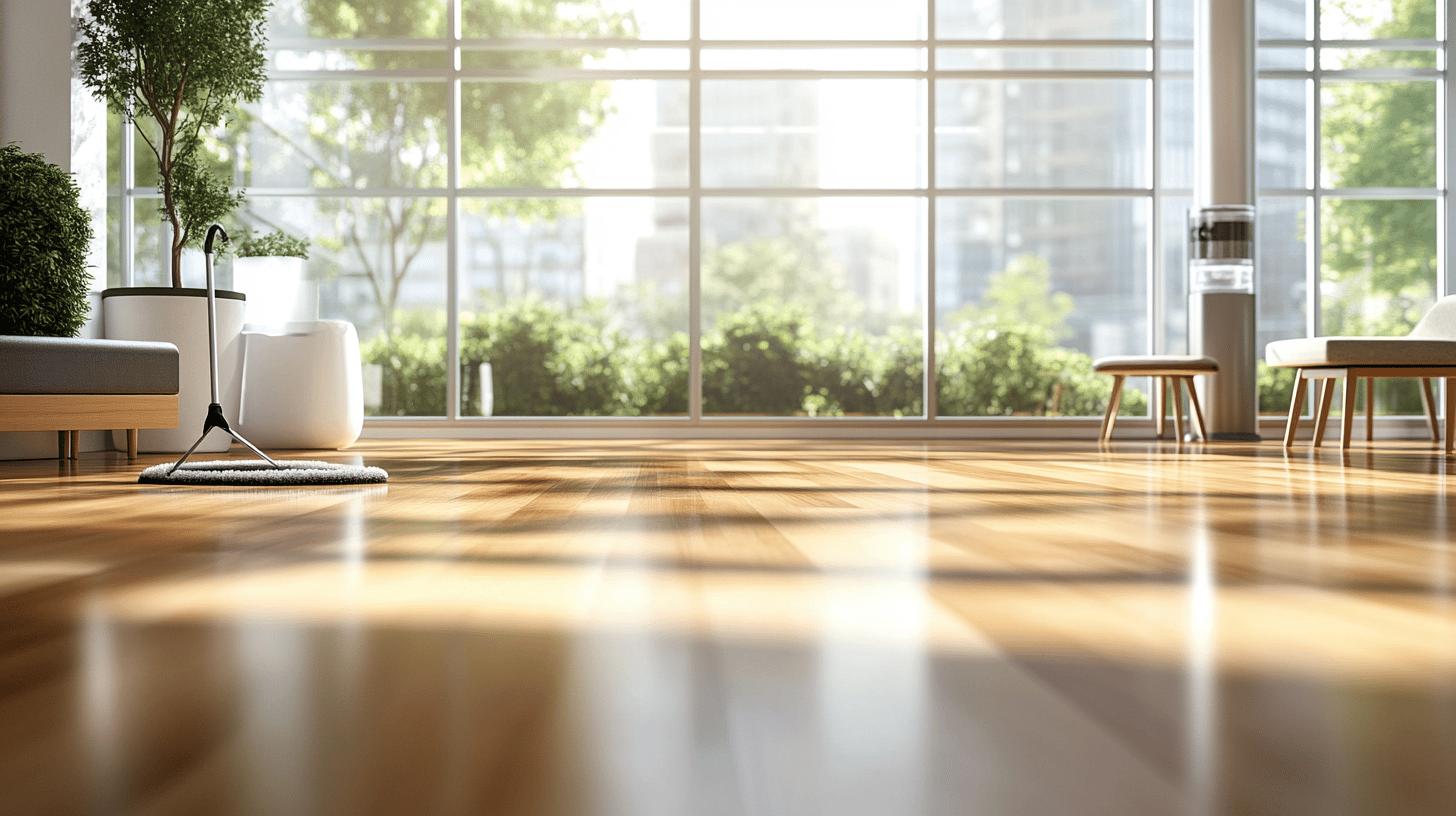
Regular wood floor restoration and maintenance is crucial for the longevity and pristine appearance of refinished wood floors in commercial spaces. Proper care not only extends the life of the finish but also keeps the floors looking their best, enhancing the overall aesthetic of the space.
Essential Maintenance Tips
Maintaining your refinished commercial wood floors involves several key practices. Follow these tips to ensure your floors stay in top condition:
- Daily dusting: Dust and dirt can act like sandpaper on wood floors, causing scratches. Regular dusting with a microfiber mop helps prevent this damage.
- Using felt pads under furniture: Heavy furniture can cause dents and scratches. Attaching felt pads to the legs of chairs, tables, and other furniture pieces can protect the floor from these marks.
- Recoating the finish every few years: Depending on the amount of foot traffic, recoating the finish every 3-5 years can help maintain its protective layer and appearance. This periodic reapplication prevents the floor from wearing down to the bare wood.
- Controlling indoor humidity: Wood floors can warp due to changes in humidity. Keeping indoor humidity levels between 30-50% helps prevent this issue. Use a dehumidifier or air conditioner during humid months and a humidifier during dry months.
- Immediate cleanup of spills: Spills can cause stains and damage if left unattended. Clean up any spills immediately using a damp cloth, ensuring that the floor is dried thoroughly afterwards to prevent moisture damage.
By following these maintenance tips, you can preserve the beauty and functionality of your refinished commercial wood floors, ensuring they remain a valuable asset to your space for years to come.
Benefits of Professional Wood Floor Refinishing Services
Why hire a professional for wood floor refinishing? The precision lies in professional floor sanding expertise and experience, which ensures a flawless finish. Professionals like Ryan’s Restoration possess the necessary skills and knowledge to handle various wood floor types and conditions, offering a superior outcome that DIY efforts often can’t match.
Comprehensive Services Offered
What services do professionals provide? Professional services encompass a range of techniques designed to restore and enhance wood floors:
- Virtually Dust-Free Sanding: Advanced equipment captures dust, ensuring a cleaner environment and reducing health risks.
- Organic Oiling: Eco-friendly oils penetrate deep into the wood, providing long-lasting protection and enhancing the wood’s natural beauty.
- Natural Waxing: Wax finishes offer a soft, natural appearance, adding a layer of protection while highlighting the wood’s texture.
- Soft Buffing: Buffing creates a polished sheen, making floors look immaculate and well-maintained.
- Repairs and Restoration: Addressing damages such as scratches, dents, and loose boards ensures the floor is structurally sound and visually appealing.
Flawless Finish and Comprehensive Restoration
Why opt for comprehensive services? A flawless finish not only enhances the aesthetic appeal but also extends the floor’s lifespan. Ryan’s Restoration, for example, offers a holistic approach, ensuring each step from sanding to sealing is meticulously executed. Their expertise guarantees that the final result is both beautiful and durable, suitable for high-traffic commercial spaces.
Client Testimonial
A satisfied client from a large corporate office shared, “Ryan’s Restoration transformed our worn-out floors into a stunning feature of our office space. Their attention to detail and commitment to quality were evident in every step of the process, resulting in a floor that not only looks fantastic but also withstands our daily foot traffic.”
By choosing professional wood floor refinishing services, commercial spaces can achieve a high-quality finish that enhances both the appearance and functionality of their floors.
Final Words
In the action, evaluating the condition of commercial wood floors sets the foundation for a successful refinishing project. Proper preparation is essential for a seamless process.
The thorough step-by-step guide ensures each phase—from sanding and staining to sealing—is completed meticulously. Choosing the right finish enhances durability and aesthetic appeal, while cost considerations help manage the budget effectively.
Finally, maintaining refinished floors and opting for professional services, like those from Ryan’s Restoration, guarantee long-lasting beauty. Transform your commercial space: expert tips for wood floor refinishing offer the ultimate roadmap to impeccable results.
FAQ
How can I assess the condition of my commercial wood floor?
Assess the condition of your wood floors by looking for signs of wear, damage, or dullness. Check if the floor is genuine hardwood by removing a floor grate or doorway threshold.
What are essential preparation techniques for wood floor refinishing?
Preparation techniques involve cleaning the floor thoroughly, repairing any damages, and safely removing shoe moulding. Ensure the space is cleared of furniture, the floor is clean, damages are repaired, and proper ventilation is maintained.
What is the step-by-step guide to refinishing commercial wood floors?
Refinishing involves sanding, staining, and sealing. Sand using different grit levels (30-40 for heavy sanding, 50-60 for smoothing, 80+ for fine sanding). Decide whether to stain or apply polyurethane directly, choosing between oil-based or water-based options.
How do I choose the right finish for commercial wood floors?
Select a finish based on needs: oiling for water repellence, waxing for a soft appearance, or buffing for sheen. Oil-based polyurethane enhances wood colour with a longer drying time, while water-based polyurethane offers a clear finish and faster drying.
What are the cost considerations for refinishing commercial wood floors?
Costs vary based on area size and materials. Budget for materials, equipment, and labour. Request a fixed price quote and use a price calculator to estimate project costs.
What are some maintenance tips for refinished commercial wood floors?
Maintain refinished floors with daily dusting, using felt pads under furniture, recoating every few years, controlling indoor humidity, and cleaning up spills immediately to avoid stains.
What are the benefits of professional wood floor refinishing services?
Professionals offer expertise, ensuring a flawless finish. Services include dust-free sanding, organic oiling, waxing, repairs, and comprehensive restoration processes, resulting in a high-quality finish and extended floor lifespan.
